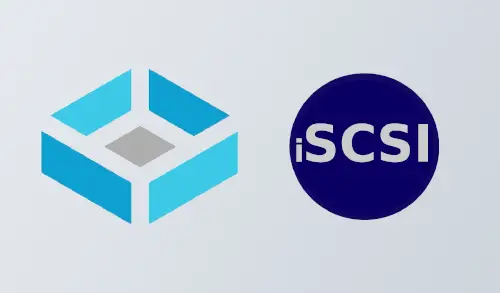a technician, that it depends on the storage, if a parallel access on iSCSI is supported.
It doesn't depend on the storage. That's the dumbest thing I've heard today, though the day is young. Some iSCSI targets offer an option to prohibit concurrent access, but that's only as a safety belt for the issue we're about to discuss.
Is it capable of such a service, that 2 or more iSCSI connections are accessing the same volume at the same time?
Of course it is.
is it possible, that those connections read the same source at the same time?
Of course it is. People use SAN storage for hypervisors and other stuff like that ALL THE TIME.
However, there's a problem. Concurrent connections require a cluster-aware filesystem, such as VMFS. iSCSI is a block level protocol.
Good search term: "cluster aware filesystem"
So when an operating system mounts a hard disk, it generally caches useful things in memory and assumes that no one else is writing to the hard disk. You can substitute "SATA disk" or "USB disk" or "USB flash" in there if those feel more comfortable to the discussion. A typical filesystem that is NOT cluster-aware makes this assumption.
Imagine simultaneously plugging a single SATA disk or USB flash device into two PC's. This is what iSCSI effectively makes possible. Now you have a situation where two PC's may be trying to access the same data. Device one reads a file named "abc" and happens to read in a directory block and caches it. Device two wants to write "def". Reads the same directory block. Finds the slot right after "abc" is open, so writes a directory entry there, now the physical disk block contains directory entries for "abc", "def". Device one now decides to write "ghi". It has the cached block, sees "abc", sees the empty entry right after it, so writes "ghi" there. Now the physical disk block contains "abc", "ghi". And we've lost information. What happened to "def"? And the data that the second PC is writing to that file?
Cluster-aware filesystems allow multiple hosts to simultaneously mount a single disk. This is possible because the cluster-aware filesystems take extra steps to signal between nodes the writes that are being staged out, and also they tend to do much less read caching. VMFS is one of the best examples of this.
Your typical consumer grade filesystems, NTFS, Apple, etc., are optimized for speed, and try to maximize caching, and are NOT cluster-aware. They will happily trample your disk and can corrupt everything if you get multiple mounts going.
So you absolutely need to use AFP, CIFS, NFS, or other file-level sharing protocols for multi-host access in most situations. It does not matter if the backing disk is connected via SATA, USB, SAS, iSCSI, Fiber Channel, etc. -- as long as a single host has the filesystem's disk mounted, and is responsible for coordinating the integrity of the filesystem, you'll be fine. This is why most network storage works with these protocols. You only have one kernel accessing and one filesystem mount active, which means that there's no chance of inadvertent trampling.



